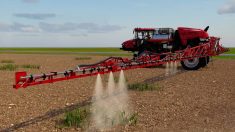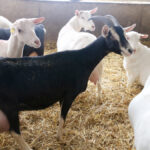The Canadian Food Inspection Agency (CFIA) has announced that it will be initiating a study into the definition of “local” food. The present labelling regulation states that local food is defined as being sold within 50 miles of where it is grown or within a local jurisdiction. The CFIA feels that definition is out of date and needs to be redefined.
One wonders why an agency that is constantly under pressure to deal with food safety issues and budget cutbacks, suddenly has the time and money to deal with an issue that has nothing to do with food safety. It’s also not exactly critical, being that labelling anything “local” is voluntary, is impossible to confirm in most cases, and the regulations are unenforceable. One ponders, then why does the CFIA need to get involved at all?
Read Also

Guarding against misinformation: Do you believe in house hippos?
Misinformation and disinformation run rampant in today’s digital age. Farmers must be wary of the digital dangers and know how to keep themselves safe.
The word local, like organic, natural or sustainable, has become somewhat meaningless to most as they are all used without much concern that they may not describe what is being sold. And since there seems to be no consequences to falsely using those labels, vendors from giant grocery chains to small market gardeners, by accident or design, use such labelling to further their marketing schemes. It gets absurd at farmers’ markets where consumers assume that all produce being sold is organic and local. It doesn’t seem to occur to many that a lot of fruit and vegetables sold at farmers’ markets can’t possibly be local because of our short growing season.
In Alberta many vendors overcome the seasonal production concern by claiming their fresh produce comes from B.C., which seems to presume they have a year-round growing season. It’s all suspect of course — most consumers wouldn’t know a B.C. strawberry from one from California or Mexico. A vendor’s old sales trick is to pile empty fruit boxes with B.C. labels in full sight of passing consumers. Some vendors have resorted to certificates as proof of where their produce comes from. That’s done with Taber corn for instance. But there is no way of knowing, there is no test that can confirm the origin of a peach or a rutabaga. It’s all part of the trust that naive consumers want to have in the process.
In the CFIA announcement it was stated that in the interim, local would also be defined as anything produced within the province. That blows the 50-mile rule out of the water. To be fair that rule has discriminated against large provinces with a spread-out ag industry. Are vegetables grown by a Hutterite Colony 100 miles away any less local than vegetables grown by a small grower a few miles out of town? Local in Alberta is not quite the same as local in compact growing areas in B.C. or Ontario. But it opens a can of worms — where do you draw the line? In a province that is 800 miles long that makes vegetables from the Peace River district local.
I suspect more growers and retailers wanted to get on the “local label” bandwagon and want the label redefined for their own marketing purposes. The problem is that will make the label less exclusive, and much more competitive. In the end that will put it in the same boat as an organic label — that is, fairly meaningless.














